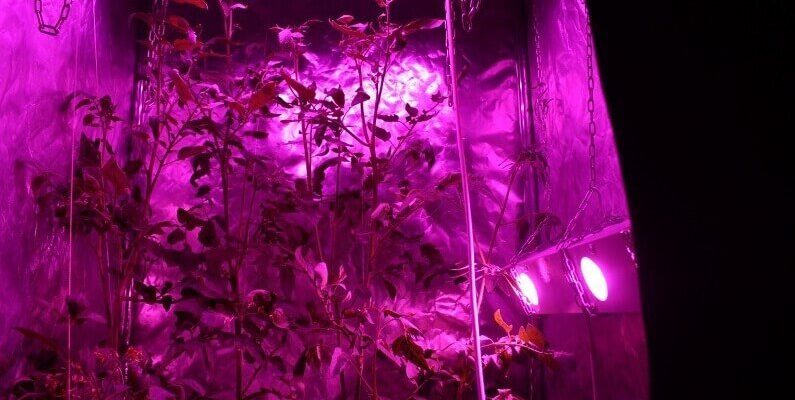For plants, light is life, so without figuring out how to place lighting for hemp, you will not get a good harvest. For readers of our grow blog, Coffeeshop® has prepared a guide for installing any photon source – so important for the health and growth of cannabis.
Choosing a Growbox Lamp
There are the following types of lamps: fluorescent (energy saving and fluorescent lamps), plasma and LED (LED), sodium and metal halide (DNaT, DNaZ, DRI).
-
Fluorescents are the cheapest, but they can only be used at certain stages of a plant’s life because they work in a limited light spectrum.
-
LED is not a cheap option, but LEDs almost do not heat up and are modest in terms of energy consumption. These lamps are ideal for all stages. If you don’t know what kind of lighting for cannabis plants to choose, take a closer look at this type of lamp.
-
Plasma – expensive, but as close as possible to natural light option. It is good on its own, but when combined with HPS, it gives an ideal luminous flux for cannabis.
-
Sodium lamps are the most efficient type of lighting for any grow box. They are not as expensive as plasma and give a smooth light output, which plants like so much at all stages. Their only drawback is that they require additional equipment to work: cartridge, IZU and ballast or electronic ballast. You can purchase all accessories in our online store.
We carry out lighting in the growbox
To organize the correct lighting of marijuana, you will need a lamp, a lamp and a ballast. You can choose the type of lighting from those listed above in terms of price, energy consumption and luminous flux, depending on the stage of life of the plant. The power of the lamps is selected according to the correspondence tables between the power of the luminous flux and the size of the grow box. For example, for a greenhouse 1.5 x 1.5 m, a HPS lamp from 600 watts is required.
Choosing a lamp
Sodium lamps require a special design that allows the light to scatter in the desired direction. Lamps are divided into ventilated and non-ventilated. The former include those to which, with the help of corrugations, you can connect a fan and remove excess heat through the ventilation duct. Ventilated lamps can be vertical (installed along the stem of the plant) and horizontal (suspended from the ceiling). Due to the possibility of active cooling, a lamp with a ceiling lamp can even be placed close to the plant, which is not always good for hemp, but it’s just right for compact grow boxes.
Non-ventilated luminaires without active cooling contribute to the directional distribution of both light and heat. They are best used for large greenhouses in which a natural ventilation system is provided and adjusted or an air conditioner is installed.
Choosing a ballast
This is the name of the device that activates the operation of gas discharge lamps. Ballasts can be used for street lighting or organizing a similar system indoors. The first ones are inexpensive, durable and wear-resistant, but they buzz and get very hot. The indoor ballast heats up little or no heat at all and you can handle it even while the appliance is in operation. Such devices allow you to adjust energy consumption, but are more expensive than their “street” counterparts.
Please note that wires are often not included with the ballast. And one more thing – when buying such a device for a large greenhouse, check with the manager for what length of wires this device has calculated.
How to arrange lighting in a grow box
And finally, a small note for those who assemble a hemp lighting system with their own hands.
The power of the lamp and its distance to the plant varies throughout the growth period. Let’s explain with an example. The minimum distance from the plant to the lamp of 400 W is 15 cm, the maximum is 53 cm. If closer, the leaves will simply burn out, if further, the cannabis will not receive the required number of Lumens, and the lighting will not be effective. The best option is to support the lamp above the top at a distance of 38 cm.
When creating lighting for hemp, think about the option of moving fixtures. If you use the ceiling version, it is better that it has flexible suspensions (chains, ropes, etc.), the length of which can be adjusted.





